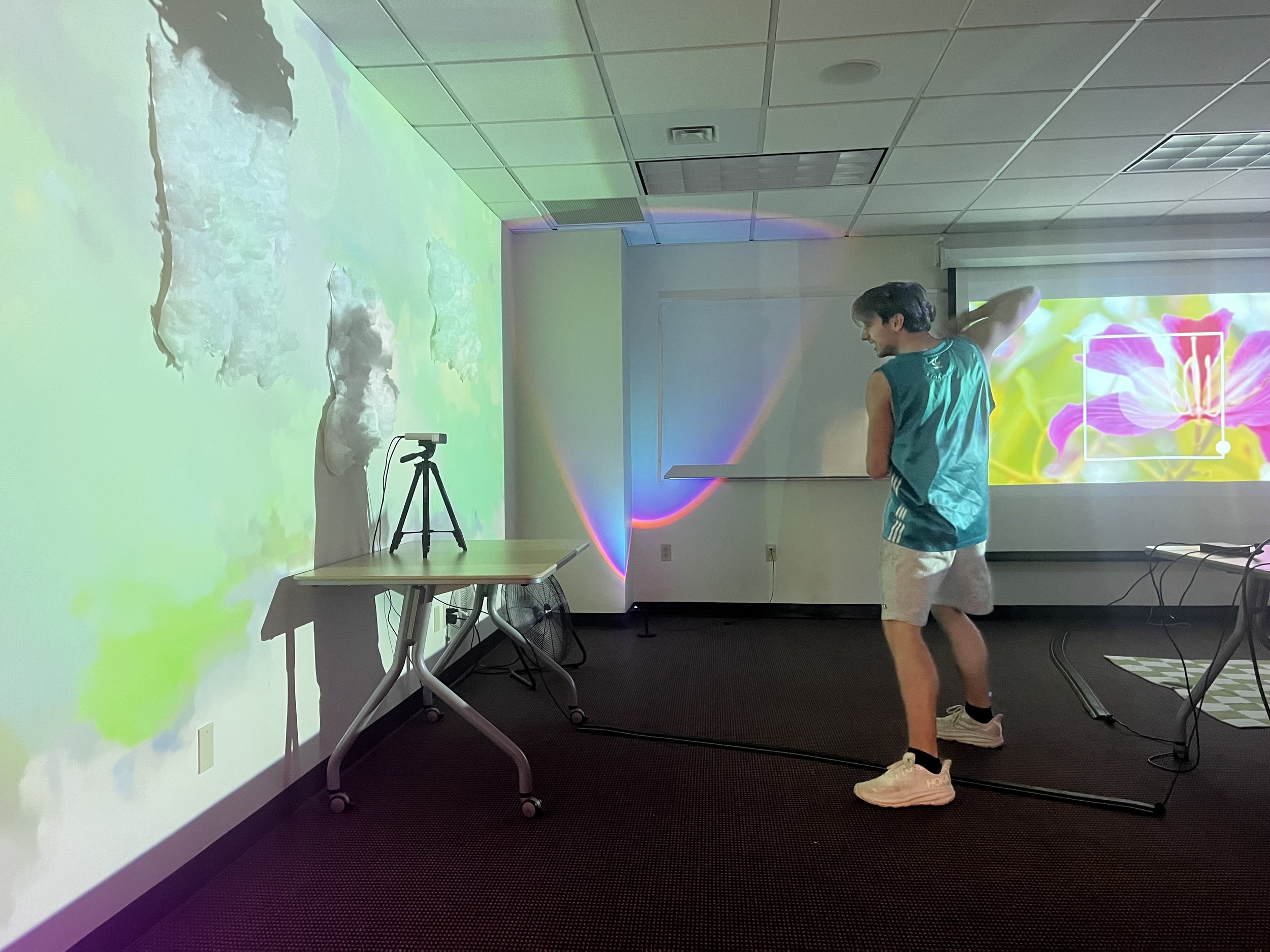Immersive Media Program Introduces Microgrant Initiative
A still from Ethan Derstine’s stop-motion animated short film, “It’s Pronounced Kaffey.” (Courtesy of Ethan Derstine)
Ethan Derstine ’25 always loved stop-motion animation, with its handmade feel and unique visual style.
A new microgrant program from Chatham University’s immersive media program allowed him to make his own.
With $250, Derstine was able to buy a student license to Dragonframe, an industry-standard stop-motion animation software, and make his own short film. At one minute and 50 seconds, it’s just under 1,000 frames, each of which he personally shot during a marathon six-and-a-half hour shoot in Chatham’s broadcast studio.
A new initiative, the immersive media (IMM) microgrant program allows students to apply for up to $250 in funds for a project. The program awards up to four students per academic year.
“I had access to all the possible resources I needed to make it my project,” Derstine said.
And the project was truly his; Derstine not only filmed and edited the short film, but he recorded and edited the audio and animated it himself. He used a mix of new techniques he learned during production and old tricks from digital animation, which he’d learned a bit about during his four years in the immersive media program.
“The website doesn’t list nearly everything that we do in the program,” he said. IMM exceeded his expectations of what he’d be able to do while at Chatham.
A Chatham student interacts with a multimedia installation designed by Steph Rios and Kassie O’Hern. (Courtesy of Kassie O’Hern)
Steph Rios ’26 and Kassie O’Hern ’26 were conceptualizing a multimedia installation for their studio play course when they learned about the microgrant.
When they realized they could apply for the funds to buy materials, they came up with the idea of a colorful projection of the sky to celebrate Earth Day, when the installation was set up in the library for Chatham’s student art showcase, SURVEY. They worked with the visual programming language TouchDesigner to create the projection.
Both Rios and O’Hern became interested in IMM once they learned about the program. O’Hern came at it from a technology and art angle. “When I was searching for colleges, I came across this program, and it was just the perfect intersection of art and technology,” O'Hern said.
Meanwhile Rios, who was initially planning to pursue journalism, found the IMM program when she was applying to Chatham. “I think that’s the beauty of IMM is that people have their specialties,” Rios said. “Some people came in knowing so much [about code], and Kassie and I came in not knowing much at all.”
“We were intimidated at first,” O’Hern added with a laugh.
“But it was a great place for us to learn and find our niche of what we want to do,” Rios said.
Learn more about the expansive possibilities of Chatham’s immersive media program at chatham.edu.


